This post may contain affiliate links. Please read our disclosure policy.
Scallion oil noodles are a simple yet flavorful Taiwanese classic. Made with simple ingredients, this humble dish is a staple of home cooking and street food. The secret? My Ginger Scallion Sauce, which adds incredible depth with minimal effort. It’s the kind of meal that feels comforting and familiar in every bite.
This dish is perfect for busy weeknights because you can prep the scallion oil ahead of time. When you’re ready to eat, just boil the noodles, toss them together, and enjoy!
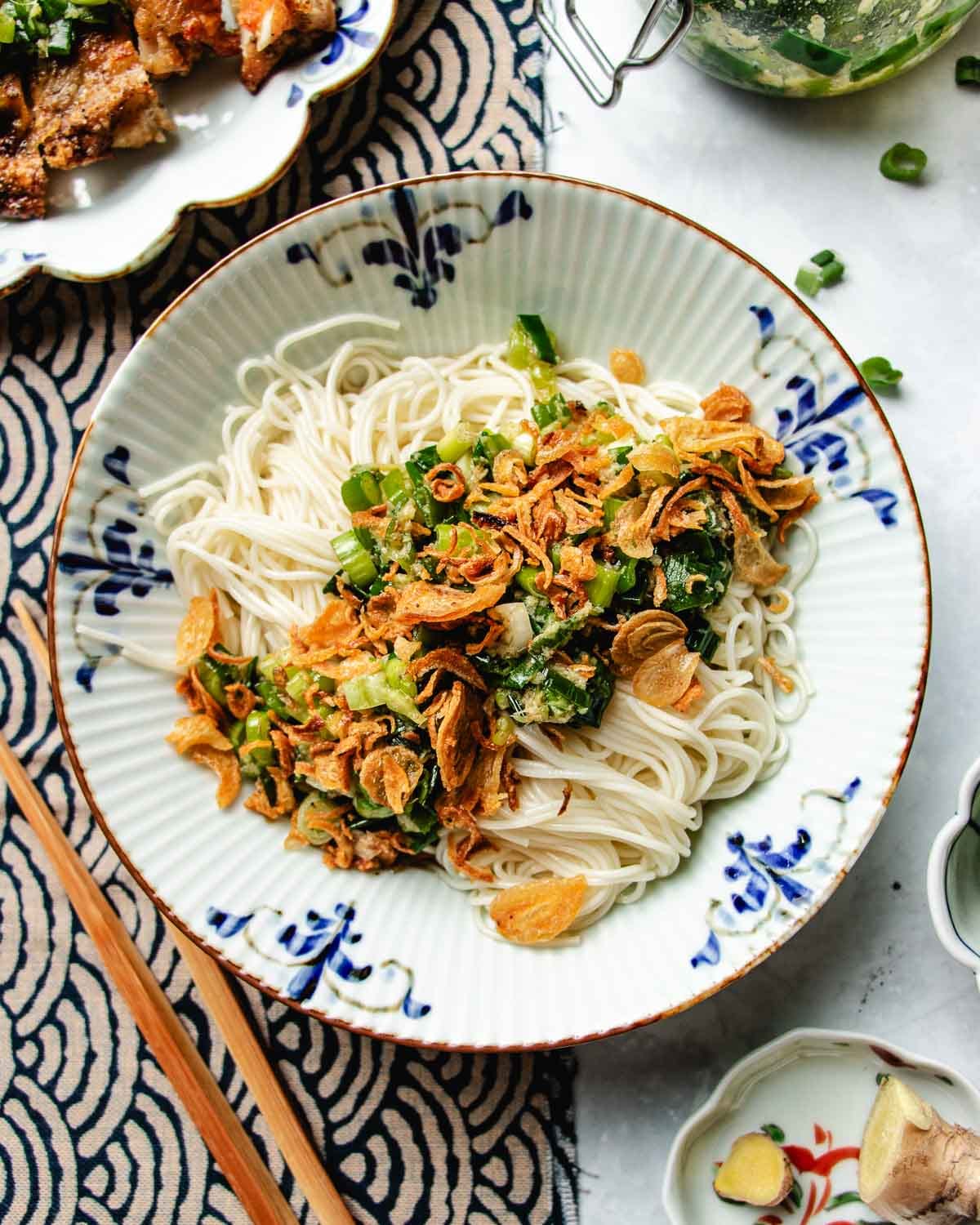
Table of Contents
A Taiwanese favorite
Scallion oil noodles were one of my favorite childhood dishes. My grandma would take me to the market at lunchtime, and we’d enjoy a bowl while she chatted with the store owner. It’s a simple, humble dish—so affordable that you could pay with nickels and dimes—but it’s packed with flavor and always reminds me of home.
The Taiwanese version is similar to Chinese cong you ban mian (蔥油拌麵) but even simpler and quicker to make. In winter, there’s also a comforting soup version made with pork larb, which gives the broth a rich, fragrant depth.
Ingredients
This scallion noodle dish is all about fresh, simple ingredients. For the noodles, I recommend using thin, round-shape noodles with some bites to them after boiling. Here is everything you need.
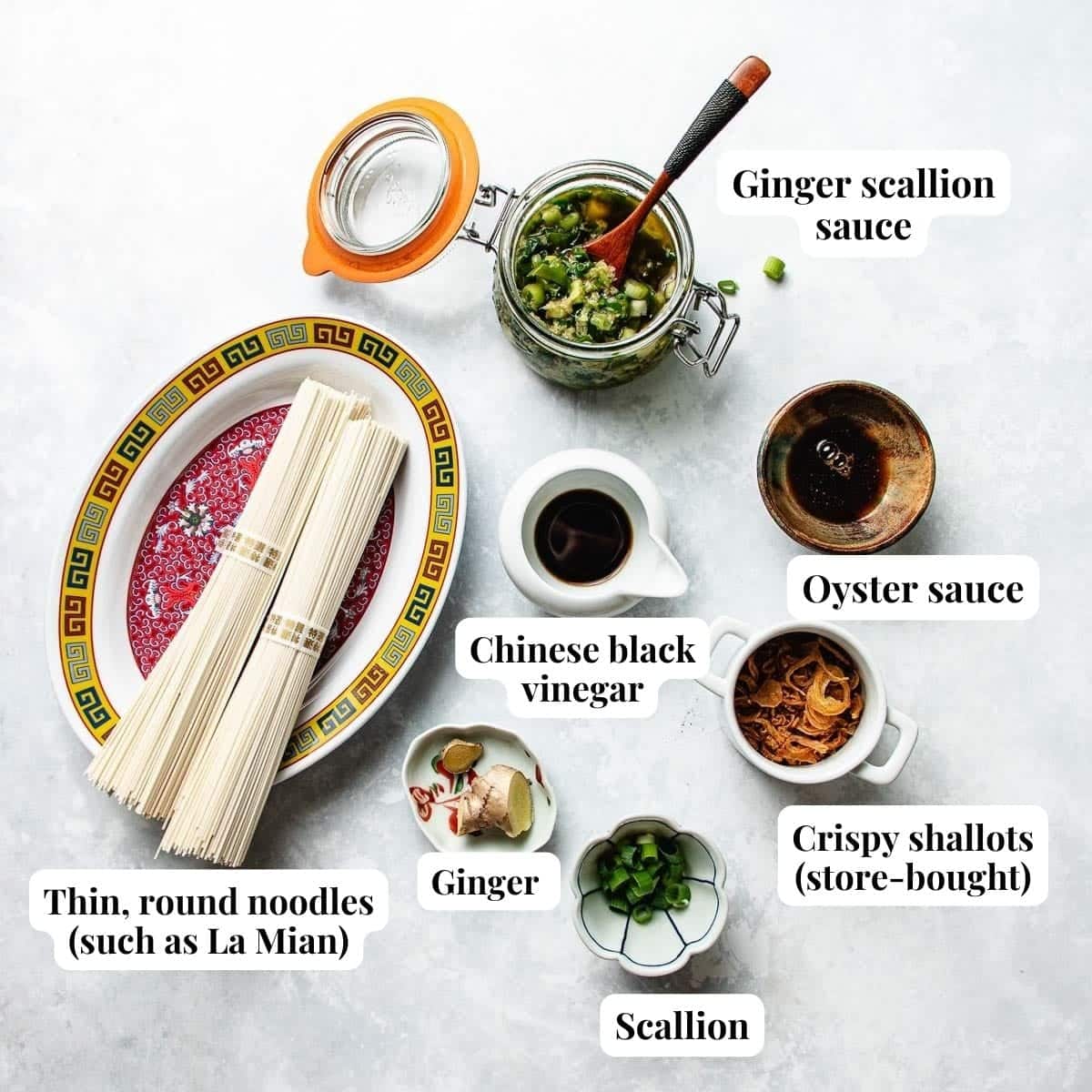
- Scallions – The star of the sauce, adding a fresh, oniony aroma and a mild sweetness.
- Ginger – Brings warmth and a subtle spiciness that enhances the scallion’s flavor.
- Toasted sesame oil – Adds a nutty, fragrant depth that ties everything together.
- Coarse sea salt
- White pepper – Gives a gentle heat and slightly earthy, citrusy notes.
- Sichuan peppercorn powder (optional) – Adds a hint of tingling spice and floral scent.
- Avocado oil (or neutral-flavored oil)
Noodles
- Thin, round noodles (such as La Mian) – The perfect base to soak up the sauce while staying springy and chewy.
- Substitute: see my guides on Types of chinese noodles for more selections.
- Oyster sauce – Brings deep umami and slight sweetness to coat the noodles.
- Chinese black vinegar – Adds a tangy, slightly smoky depth to balance the oil.
- Substitute: Aged balsamic vinegar for gluten-free.
- Crispy shallots (store-bought) – Provides crunch and an extra layer of savory flavor.
How to make scallion oil noodles
Making green onion noodles is super easy! If you’ve already made the green onion oil, the hardest part is just waiting for the noodles to boil. Toss everything together, and you’ve got a bowl of pure comfort in minutes!
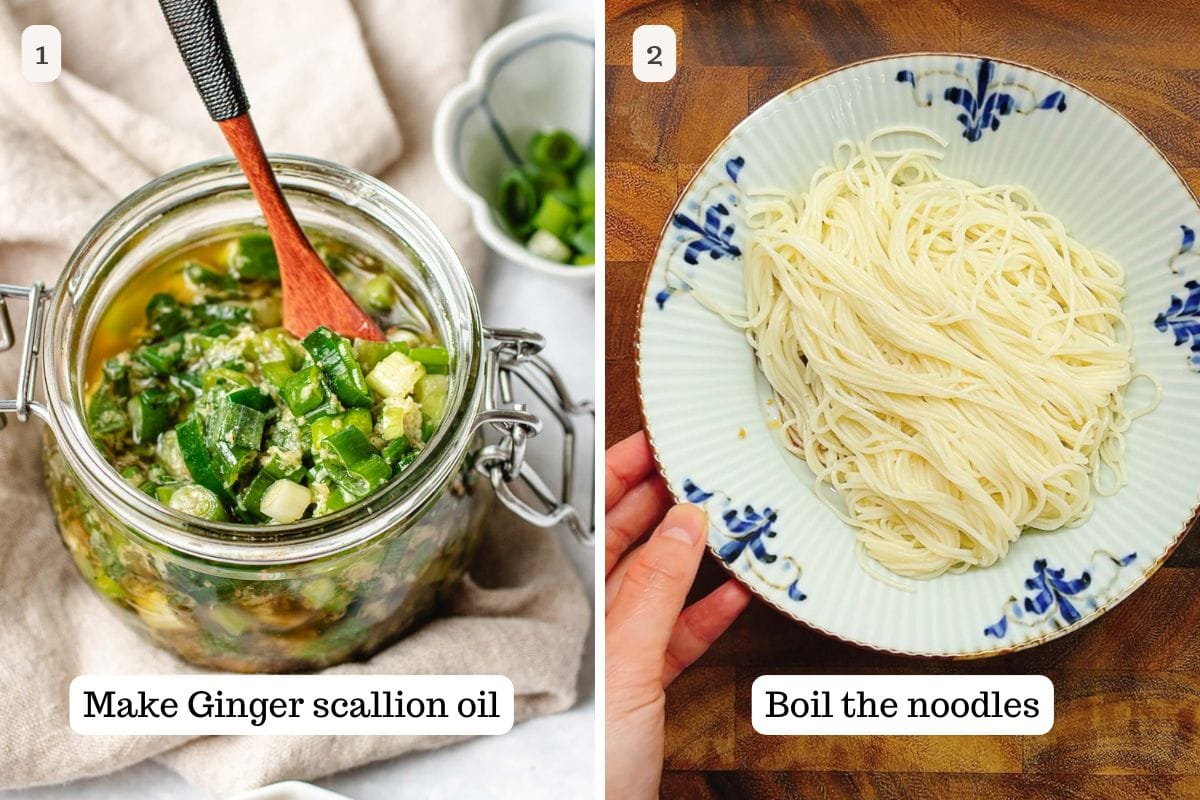
- Make the scallion oil – Dice the scallions and grate the ginger, then place them in a heat-proof bowl. Add sesame oil, salt, white pepper, and Sichuan peppercorn powder (if using). Heat the avocado oil in a saucepan over medium-low heat for 7–8 minutes until it simmers—test with a dry chopstick to see if bubbles form. Carefully pour the hot oil over the aromatics and stir. Let the fried scallions soften.
- Boil the noodles – Bring a large pot of water to a boil. Cook the noodles according to the package instructions, then drain well. Divide into four serving bowls.
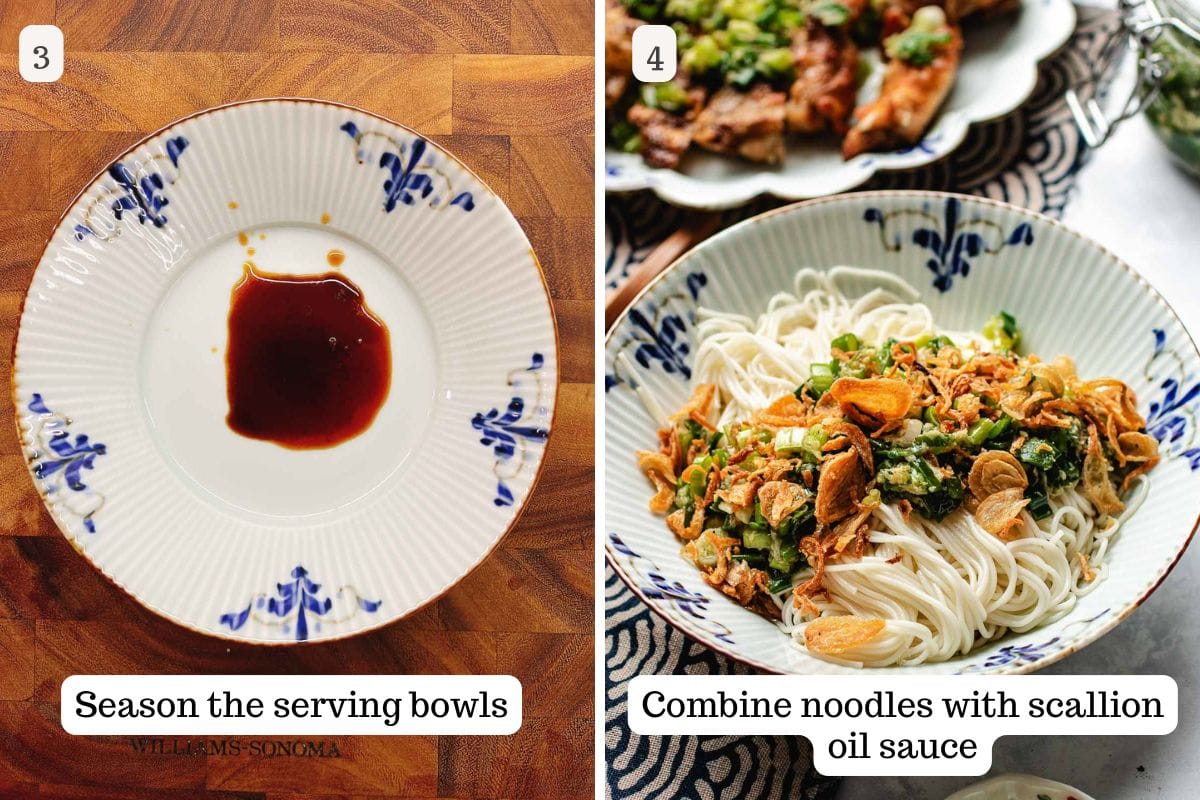
- Season the bowls – Add 2 teaspoons of oyster sauce and 2 teaspoons of black vinegar to each bowl.
- Combine and serve – Add the noodles and toss to coat evenly. Ladle a few tablespoons of green onion oil on top, then garnish with crispy shallots. Toss again and serve immediately.
Time-saving tip
Make-ahead: Once the scallion oil mixture has cooled to room temperature, transfer it to an airtight glass container. Store in the fridge for up to 1 month, but for the freshest flavor, use it within the first 2 weeks.
What to serve with scallion noodles
These soy scallion noodles are super simple yet packed with flavor. My recommendation is to pair the noodles with refreshing crunchy sides to keep the meal light and balanced.
- Refreshing vegetables: Try Chinese smashed cucumber salad, Silken tofu recipe, or Bok choy stir fry.
- Proteins: A side of Air fryer scallion ginger chicken skewers or Soy sauce eggs adds extra umami and protein.
- Pickles: If you love a little tang, top your noodles with Pickled garlic or Pickled daikon. The crunch and acidity balance the rich spring onion oil perfectly!
More ways to use scallion oil
By now, you probably see how versatile this oil is—it goes with just about anything! If you have extra left, here are some of my favorite ways to use it:
Drizzle it over Scallion chicken for extra flavor, toss it with Tofu puffs to soak up all that goodness, or brush it onto Air fryer chicken skewers for a delicious finish. It also works great with Rice cooker white rice for a simple but flavorful upgrade!
ChihYu’s helpful notes
- Use the right oil temperature: Heat the oil just until it shimmers (about 7–8 minutes on medium-low). If it’s too cool, the flavors won’t release properly. If it’s too hot, the scallions might burn instead of sizzle. Test with a dry chopstick—small bubbles should form around it.
- Use fresh scallions: Use firm, bright green scallions for the best flavor. Older scallions can turn slimy when mixed with hot oil, affecting both texture and taste.
- Make-ahead tip: Once the green onion oil has cooled to room temperature, transfer it to an airtight glass container and store it in the fridge for up to 1 month. For the freshest flavor, use it within the first 2 weeks.
- Scallion oil storage: The oil may solidify in the fridge—let it sit at room temperature or warm it slightly before using.
More Taiwanese noodle recipes
Love green onion noodles? Here are more easy and flavorful Taiwanese noodle dishes to try!
- Cold noodle salad – A chilled noodle dish with a Japanese-inspired miso ginger dressing.
- Taiwanese cold peanut noodles – Nutty, creamy, and perfect for warm days.
- Taiwanese cold sesame noodles – Light, refreshing, and full of sesame flavor.
- Garlic chili noodles – Spicy and garlicky with homemade chili garlic sauce.
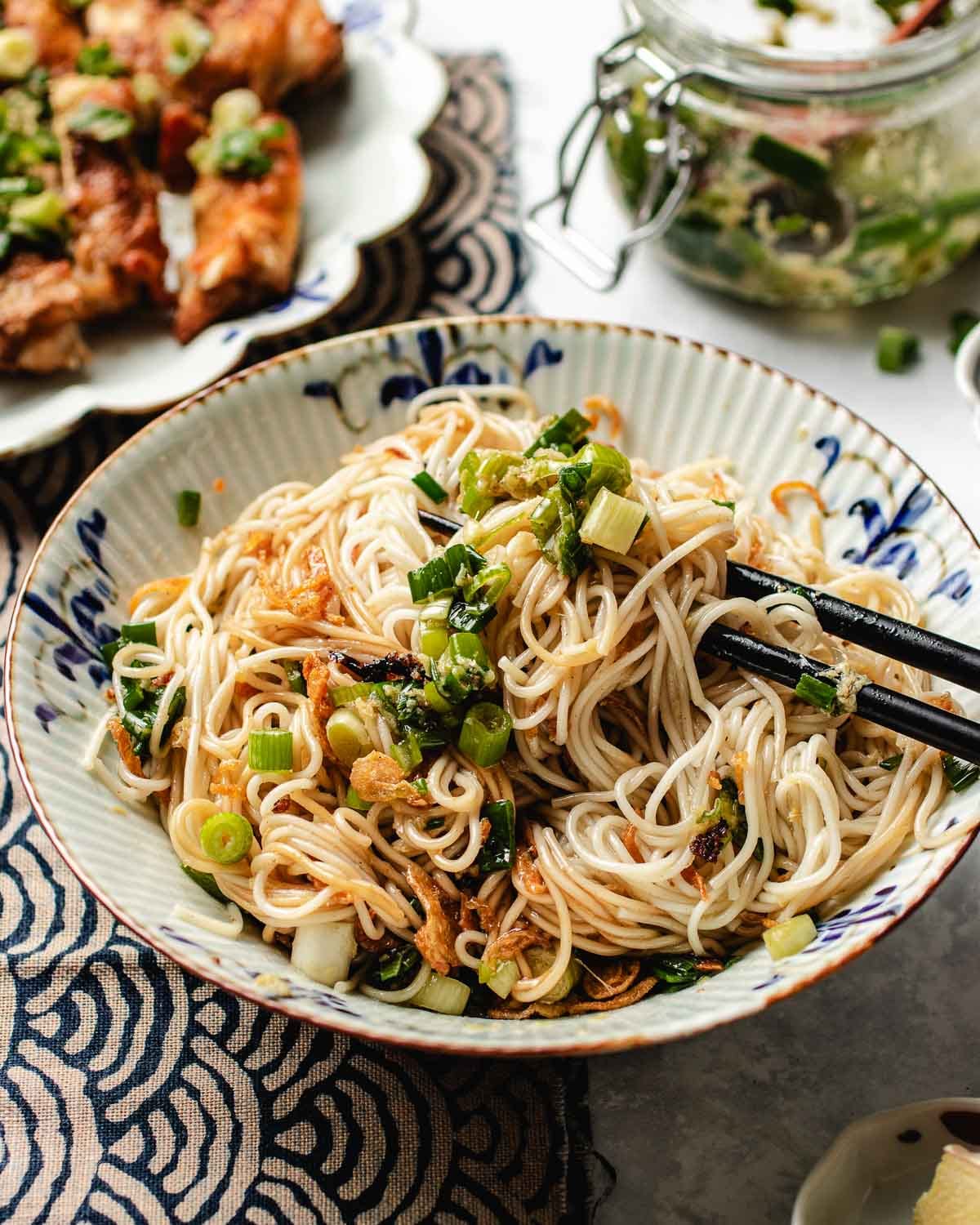
Scallion oil noodles

Video
Ingredients
Ginger scallion sauce:
- 6 bulb scallion diced, a little over 2 cups diced scallion
- 1 oz ginger root grated, about 1.5 tbsp grated ginger
- 2 tbsp toasted sesame oil
- 1 tsp coarse sea salt or to taste
- ½ tsp ground white pepper
- ½ tsp Sichuan peppercorn powder optional
- ½ cup avocado oil or any neutral-flavored oil
Noodles:
- 4 bundle thin round noodles such as La Mian, or any thin noodles of your choice
- 2 tsp oyster sauce per bowl, or to taste
- 2 tsp Chinese black vinegar per bowl, or aged balsamic vinegar, to taste
- Crispy shallot or gluten-free fried onion
Instructions
Makr scallion oil:
- Dice the scallions into small rounds and grate the peeled ginger, then place them in a heat-proof bowl. Add sesame oil, salt, white pepper, and Sichuan peppercorn powder (if using).
- In a small saucepan, heat the avocado oil over medium-low heat for about 7–8 minutes until it simmers—test by inserting a dry chopstick to see if bubbles form. Carefully pour the hot oil over the aromatics, allowing it to sizzle. Stir to combine and let the scallions soften for a few minutes.
- For detailed instructions, see the post on ginger scallion sauce.
Boil noodles:
- Bring a large pot of water to boil. Follow the package instructions to boil the noodles. Drain well and divide them into 4 equal serving bowls.
Season serving bowls:
- Add 2 tsp oyster sauce and 2 tsp black vinegar to each individual serving bowl.
Combine and serve:
- Add the noodles and toss to combine then ladle a few tablespoons of scallion oil and sprinkle crispy shallots on top. Toss again. Serve right away.
Notes
- Scallion sauce storage: You are likely to have extra leftover sauce. Once the sauce has cooled to room temperature, transfer it to an airtight glass container. Store in the fridge for up to 1 month, but for the freshest flavor, use it within the first 2 weeks.
Nutrition
Nutrition information is automatically calculated, so should only be used as an approximation.

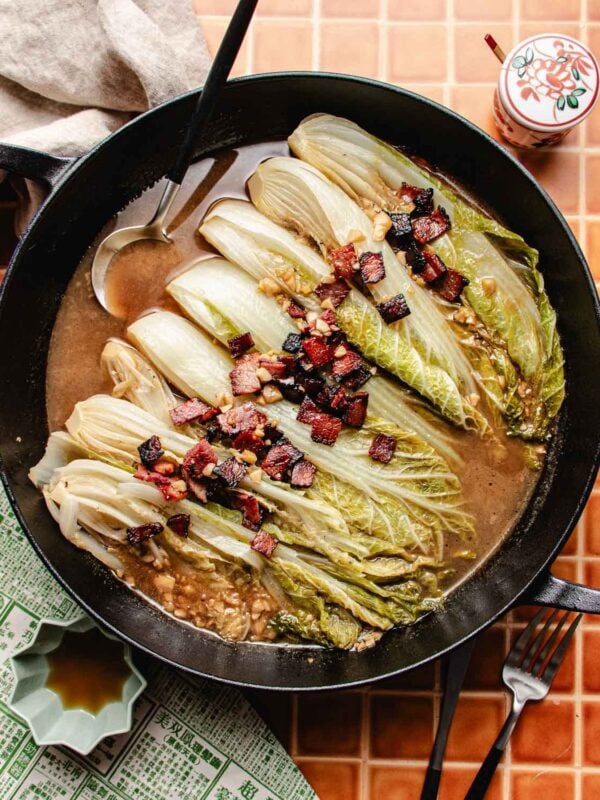


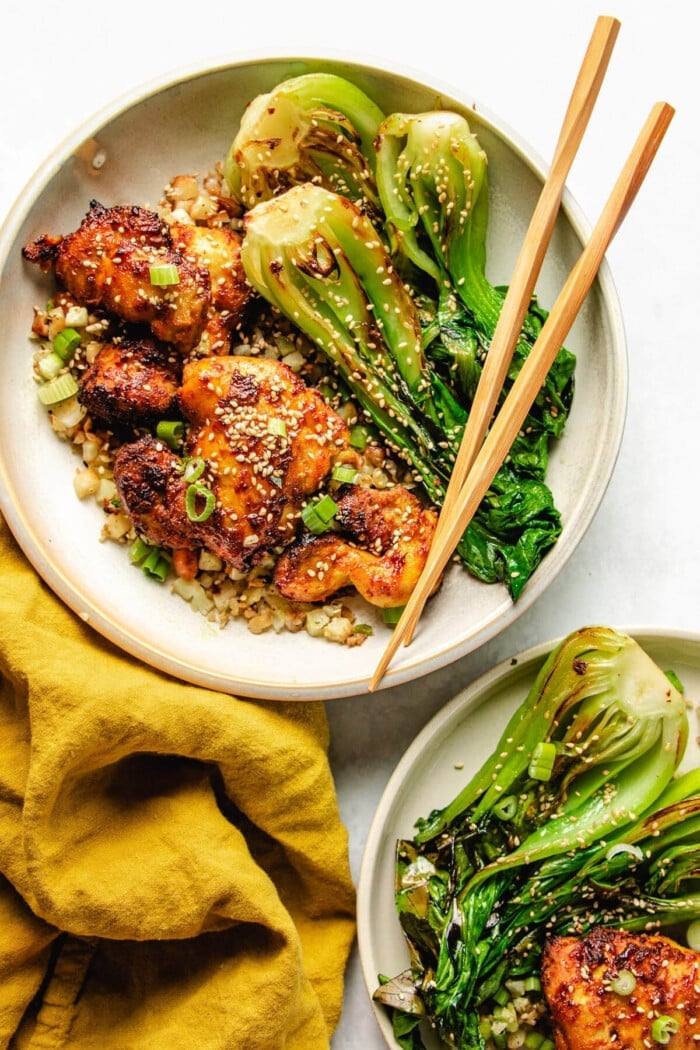








These noodles are one of the best I’ve ever tried. The instructions are clear and easy to follow. The scallion oil sauce is so good! I made a larger batch to store in the fridge for this coming week. Can’t wait!
Thanks so much!
These noodles are so good! I first made the scallion oil for the crispy chicken dish and the leftover sauce works perfectly for the noodle bowls. I love that you can use one sauce for so many things! Quick, easy, and delicious!
Wonderful!